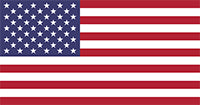Face Mask Filtration and Breathability: Yes, You Can Have Both
As vaccines are administered and restrictions are easing, more businesses are re-opening, and companies are bringing their employees back into the office. This raises concerns about employee safety and well-being given that COVID transmission is still possible.
While it still remains unclear if employers will be responsible for providing personal protective equipment (PPE), such as face masks (aka barrier face covering), for their employees, many are choosing to do so in the interest of preventing infection. With the shortage of medical masks, many people have turned to non-medical masks, such as cloth masks, as alternatives. It can be challenging to know which masks are effective while being comfortable enough to wear for an entire work day.
ASTM Standard
ASTM International, an international standards organization that develops and publishes voluntary consensus technical standards, recently released a standard for non-medical masks that provides guidelines for intelligently choosing an effective mask and taking the guesswork out of determining if a mask is effective or not. This standard covers everything from general construction to cleaning, but in this post, we focus on two characteristics that are important for safety AND comfort but are often considered mutually exclusive: filtration and breathability.
Filtration: How Well Does the Mask Keep Particles From Passing Through It?

According to ASTM, filtration measures the ability of a barrier face covering to capture aerosolized particles smaller than one micron. If the face covering captures the particles, they don’t reach the wearer’s mouth and nose, and particles from the wearer don’t enter the atmosphere around them.

Image from Visual Capitalist.
A higher filtration efficiency indicates that fewer particles pass through the material and the face covering is better at protecting the wearer and those around them from infection. Usually as filtration increases, breathability declines.
ASTM has defined two levels of filtration:
Level 1: Filtering of at least 20% of particles smaller than a micron
Level 2: Filtering of at least 50% of particles smaller than a micron
Cloth masks are quite variable, but typically offer filtration at a level 1 or below. N95 masks, on the other hand, follow stricter requirements and provide high filtration performance (95% filtration).

Breathability: How Easy Is It To Breathe With the Mask On?

According to ASTM, breathability measures the degree to which a product worn over the wearer’s nose and mouth restricts the ability of the wearer to inhale and exhale.
ASTM has also defined two levels of breathability:
Level 1: Resistance to air flow of ≤15 millimeters of water column
Level 2: Resistance to air flow of ≤5 millimeters of water column
Masks with good breathability usually have a structure with less resistance to airflow, which means that they also allow particles to pass through. Therefore, as breathability improves, filtration typically declines. So, cloth masks, which have less filtration, are more breathable, and N95 masks, which have high filtration, are less breathable.

The Makings of an ASTM Level 2 Face Mask: High Filtration AND High Breathability
Choosing a mask that keeps you safe (by filtering out particles) but is comfortable (by allowing you to breathe) can be difficult. Breathability is often considered a comfort factor and is sacrificed to achieve high filtration. Ask anyone that has worn an N95 mask for a long period, and they’ll tell you how difficult it is to breathe. But, they keep the wearer and those around them safer from infection (when worn properly). Constant adjustment of less breathable masks (to allow more air in) reduces their effectiveness and could expose the wearer to particles outside the mask..
But it is possible to have the best of both worlds – by meeting the ASTM Level 2 standards for both breathability and filtration. Motivated by the shortage of material to make N95 masks early in the pandemic, leaders in the nonwoven and biopolymer industries developed a new bicomponent spunbond material that doesn’t require a meltblown filtration layer. N95 masks use a meltblown layer, which has been an issue in the supply chain for face masks during the pandemic. The unique spun bound media is also stronger than traditional meltblown materials used in masks and does not require electrostatic charging, which has been another bottleneck in the production of face masks.
The Aries Work Week Barrier Face Covering Mask, designed to be used for long periods of time in the workplace, is manufactured with this new fabric (branded as Captur). Based on internal testing, the Aries mask achieves filtration of 83% and breathability of 5mmH20, avoiding the tradeoff required with both cloth and N95 masks.

If we think of the Aries mask in terms similar to that of gold – the higher the caratage, the more malleable it is, making it less practical to use in products. A lower carat gold has a good balance of malleability and durability – just like Aries masks are a good balance between filtration and breathability that is ideal for prolonged everyday use. Your employees can be comfortable wearing a mask and confident they are being protected from infection.
Want to know more about masks that offer both filtration and breathability? Contact us today.
 100% Made in America
100% Made in America 